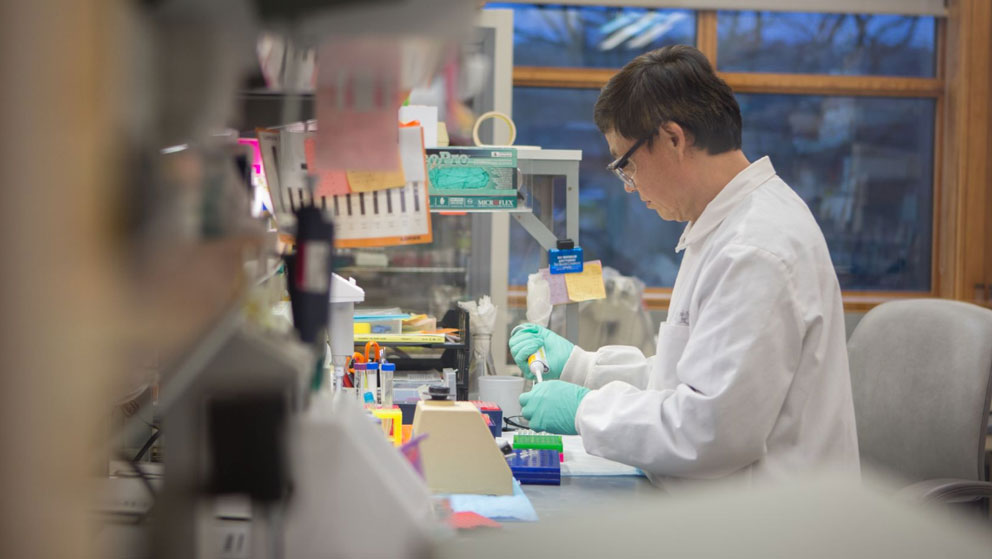
Senior Research Scientist Bo Chang, Ph.D., works in his laboratory at The Jackson Laboratory. JAX photo by Marie Chao.
The National Eye Institute has continued funding for The Jackson Laboratory's Eye Mutant Resource.
Serious or disabling eye diseases affect many millions of people worldwide, but research on these diseases is limited by the many obstacles to studying disease processes in the human eye, says Bo Chang, Ph.D.Conducts research to identify, characterize, and distribute mice with genetically caused eye disorders, including retinitis pigmentosa and achromatopsia.Bo Chang, a senior research scientist at The Jackson Laboratory (JAX).
In contrast, he says, “Mouse models of inherited ocular disease provide powerful tools for understanding disease progression, and for designing molecules for translational research and gene-based therapy.”
Together with Patsy Nishina, Ph.D.Employs mouse models of human eye disease to study gene function and mechanisms underlying disease pathology.JAX Professor Patsy Nishina, Chang directs the Eye Mutant Resource, the world’s repository for mouse models of genetic eye diseases. The National Eye Institute has made a four-year grant totaling $2,144,828 for continued funding for the resource.
“The primary objective of the JAX Eye Mutant Resource is to discover, characterize and preserve mice with ocular disorders and to make them available to the vision research community,” Chang says. “The Resource has distributed 35 mouse models of ocular disease to the vision research community and has also contributed to the development of many new therapies.”
For example, Chang was on a research team that restored some vision in mice from the Eye Mutant Resource with congenital blindness. The research team changed Müller glia, which are supportive cells in the retina, into light-sensing cells. The findings, published in Nature, may help advance the development of regenerative therapies for blinding eye diseases.
With the new funding, Chang and Nishina plan to screen for new mouse models of eye diseases and further investigate mouse models of glaucoma and of abnormal neovascular growth, a characteristic of many eye diseases including diabetic retinopathy and wet age-related macular degeneration.
“Glaucoma is expected to reach a global prevalence of 111.8 million by 2040,” Chang notes. “These models may identify novel molecules or pathways involved in the respective diseases, and provide a resource for further in-depth research and a platform to test therapeutic strategies.”